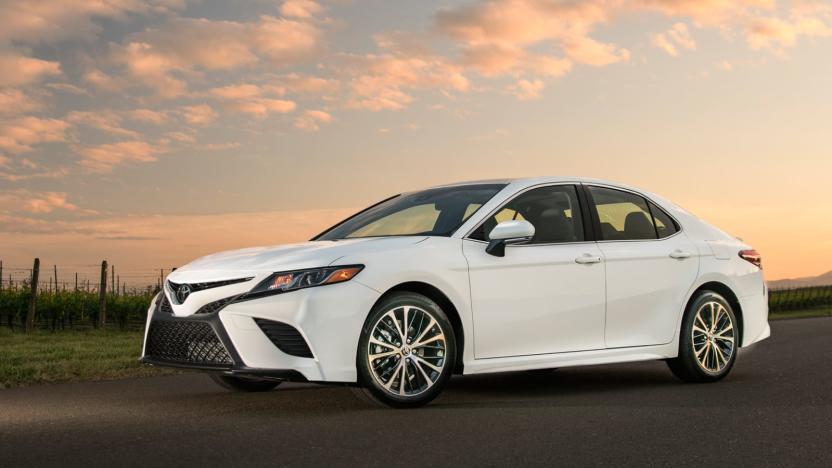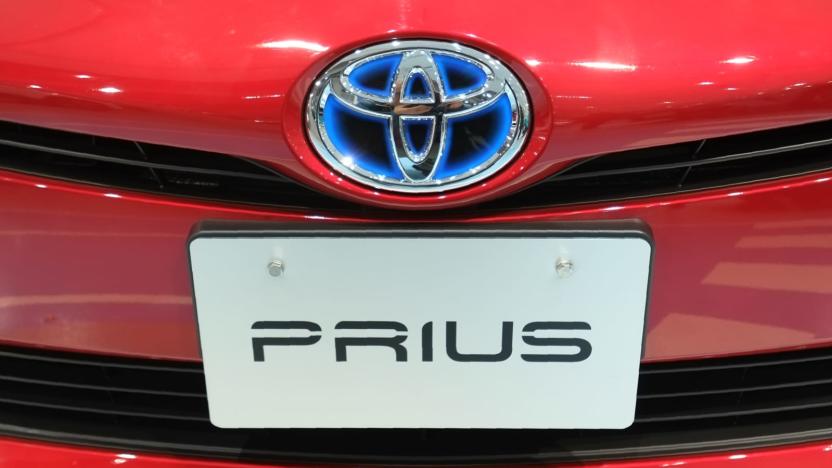dsrc
Latest

Toyota brings Alexa and CarPlay to 2018 Camry and Sienna
Good news: you don't have to buy a brand new Toyota (or score a very lightly used model) just to get modern mobile conveniences. The automaker has announced that you can add Amazon Alexa and Apple CarPlay (sorry, no Android Auto) to the 2018 Camry and Sienna. If you're itching for an upgrade, you can book an appointment for an installation at a dealership. While this isn't going to be much consolation if you're driving another model, this could prove a treat if you've been kicking yourself for buying a Toyota a little too soon.

Most of Toyota's cars will talk to each other by 2025
Toyota's first vehicles that communicate with each other will be up for sale in the US starting in 2021. By the mid-2020s, "most" of Toyota and Lexus' lineup will feature Dedicated Short-Range Communications (DSRC) the company says. Since 2015, the automaker has installed the tech in around 100,000 cars in its native Japan, according to Reuters. The automaker pointed toward its automatic emergency braking systems pledge from 2015 as proof of intent. Now, Toyota says 92 percent of its US sales are cars with its Toyota Safety Sense or Lexus Safety Sense braking tech as standard equipment.

University of Michigan connects 3,000 cars for year-long safety pilot
Road safety continues to be a major concern for both researchers and car makers alike. Yesterday saw yet another real-world trial kicking off, this time on a much grander scale. A total of 3,000 vehicles in Ann Arbor, Michigan are taking part in a 12-month project run by the state's Transportation Research Institute. The vehicles have Dedicated Short Range Communications and video recording facilities, which means the cars can communicate with each other, traffic signals, and share data to a central platform -- which in turn issues warnings when high risk situations, or if traffic problems occur. Of course, this trial will also create a massive data set, which researchers will be able to plunder, and help the National Highway Traffic Safety Administration (NHTSA) better determine the viability of such systems. So while it's unlikely to lead to self driving cars just yet, it's a step in the right direction.

GM demos accident avoidance system with brains and long range
Collision avoidance systems aren't exactly exciting new news any more. But most of these systems, even the ones that jerk the wheel out of your hands, simply detect obstacles -- they don't talk to each other. GM's new prototype uses Dedicated Short-Range Communication (DSRC) to share data with other vehicles. The cars not only detect other motorists, but construction zones, police activity, and slowed or stopped traffic. Unlike a similar concept from Ford, GM doesn't just talk to cars in the immediate area, but can detect trouble up to a quarter mile down the road, offering plenty of warning time for you to change course or hit those breaks. We think the company's estimate that such a system could avoid 81-percent of crashes in the US is a tad optimistic though -- clearly they don't realize how big of jerks most drivers are.

Continental telematics safety system alerts drivers of impending hazards
It's fairly safe to say that Continental Automotive Systems isn't the only company out there conjuring up an in-car safety system to alert motorists of impending hazards, and while a certain sect (we jest, we jest) would likely ignore whatever great advice it's sure to give, we can still admire the effort here. Dubbed a "car-to-car and car-to-infrastructure telematics application," the system's goal is to alert drivers in advance of potential perils such as poor traction conditions, an approaching ambulance / emergency vehicle, or a road-block ahead that could induce fits of frustration. The developments are reportedly right in line with the US government's Vehicle Infrastructure Integration (VII) Initiative, and we're sure officials are mighty proud of the E-Flare, which provides optical and acoustic warnings coupled with a force-feedback gas pedal, and E-Horn, which accepts incoming warning signals from emergency vehicles and alerts the driver via (presumably distracting) in-cabin lights and sounds. No word just yet on when our next whip will sport a few extra senses, but rather than make things easier on us to control, why not jump straight to autopilot?[Photo courtesy of Continental]




